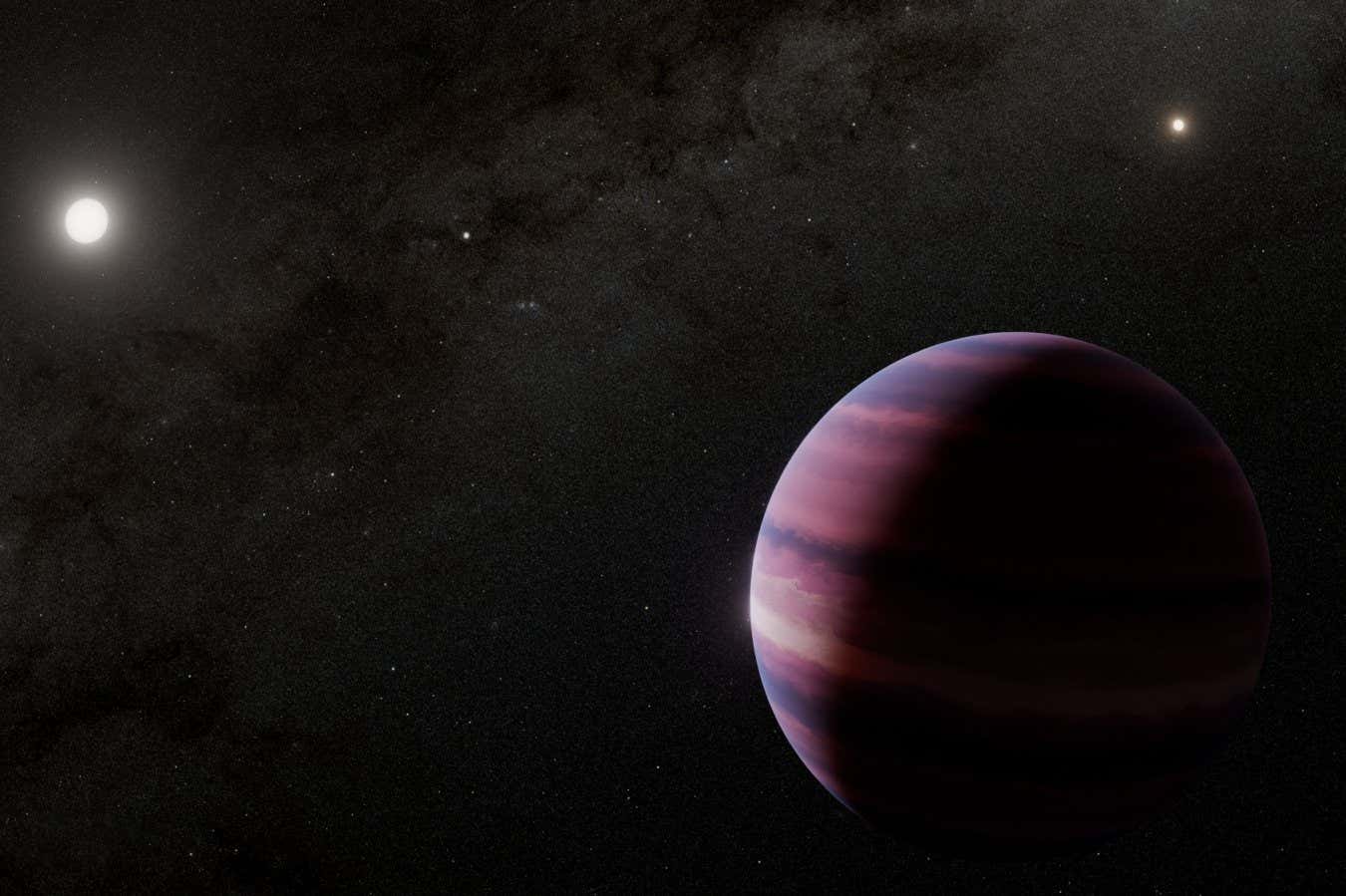The James Webb Space Telescope has detected a possible gas giant the size of Saturn in the stellar system nearest our own
By Meagan Mulcair
8 August 2025
Artistic concept of what the gas giant orbiting Alpha Centauri A could look like
ESA/Webb Copyright: NASA, ESA, CSA, STScI, R. Hurt (Caltech/IPAC)
A giant planet the size of Saturn orbiting a sun-like star has potentially been identified in our nearest neighbouring stellar system, Alpha Centauri.
At just four light years from Earth, Alpha Centauri is our closest star system. It is made up of three stars: Alpha Centauri A, Alpha Centauri B and a red dwarf star, Proxima Centauri. Researchers have long speculated Alpha Centauri could be home to a planet about as far away from a star as the Earth is to our sun – the liquid-water-friendly “habitable zone” – but confirming if any exists around the binary stars has proved challenging. That is because “[the stars] are so bright, close, and move across the sky quickly”, said Charles Beichman at the California Institute of Technology in a statement.
Read more
Why the big bang may not have been the beginning of the universe
Advertisement
But recent data collected by the James Webb Space Telescope’s (JWST) Mid-Infrared Instrument (MIRI) suggests a gas giant as big as Saturn may have been found orbiting Alpha Centauri A, a sun-like star. The finding came as somewhat of a surprise. “Webb was designed and optimised to find the most distant galaxies in the universe,” said Beichman, not exoplanets. He said finding this planet required meticulous planning, involving multiple observations, analysis and computer modelling, which “paid off spectacularly”.
While previous strategies to find planets have relied on indirect measurements, JWST did something “much more ambitious” by directly capturing the light from the possible planet, says Alan Boss at Carnegie Science in Washington DC, who was not involved in the study. However, the potential planet wasn’t visible in later observations.
“We are faced with the case of a disappearing planet!” said Aniket Sanghi, also at Caltech, in a statement. The team simulated millions of potential orbits to investigate this mystery. “We found that in half of the possible orbits simulated, the planet moved too close to the star and wouldn’t have been visible to Webb in both February and April 2025”, when the later observations were made, he said.
